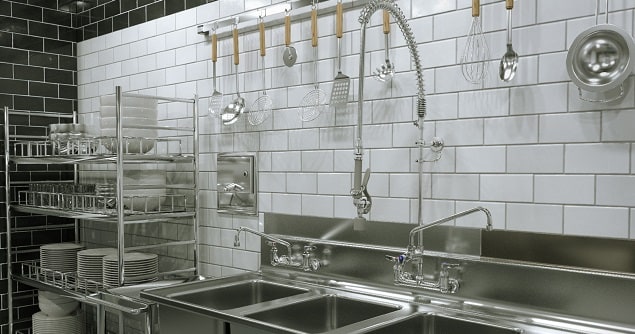
As sustainability becomes an increasingly important and prominent conversation, many operations are looking for ways to reduce their environmental impact. And water use is a critical part of that discussion.
According to the U.S. Environmental Protection Agency (EPA), hospitality and foodservice establishments account for 15% of water used in commercial and institutional facilities. And within a restaurant, more than half — 52% — of water use is in the kitchen.
Because of the volume of water being used, even small changes can lead to a significant impact for facilities. Being water-efficient can decrease operating costs by 11% and lower energy and water use by 10-15%.
Promoting water conservation in the kitchen
Consultants can help create a water conservation-friendly kitchen by specifying low-flow products at the outset. Today’s well-designed products offer the ideal mix of functionality and sustainability.
Commonly needed products are available in high-performance, low-flow varieties, including pre-rinse spray valves and faucets. Engineering and design advancements ensure that T&S Brass low-flow pre-rinse spray valves pack the same cleaning punch as their water-hogging predecessors but without the waste.
Three-compartment sink faucets are an area where high-flow faucets are often installed but frequently not needed, particularly when sinks are filled through a chemical dispenser.
There are also opportunities to reconsider some standard choices to reduce water consumption, including dipperwell faucets and hand sinks.
Selecting a water-sipping 0.25 gpm dipperwell faucet from T&S can save a significant amount of water, particularly in establishments where the faucet runs continuously.
Hand sinks can contribute a surprising amount to water use, and even small adjustments to the standard products used can make a significant impact. Using a 1.0 gpm aerator instead of a 2.2 gpm can mean savings of more than 3,500 gallons per year in an average restaurant sink. Or take the advances a step further by choosing electronic sensor faucets for hand sinks. These can save up to a gallon of water per hand wash by running water only when needed.
Keeping up with conservation
Kitchens can also make water conservation a part of their standard operating procedure by monitoring and adjusting as they go.
T&S WaterWatch is a valuable tool in these efforts, allowing operators to monitor water consumption across fixtures and identify potential areas of overuse.
Designed specifically for complex foodservice needs, T&S WaterWatch can distinguish among fixtures and equipment such as faucets and pre-rinse units, ice machines, toilets and more to identify a dishwasher that’s consuming more water than it should, a leaky faucet that’s sending water down the drain all day long or a pre-rinse unit that’s been left to run while the worker tackles another task.
Further details:
Learn more about how innovative products from T&S Brass can help support water conservation and sustainability efforts at www.tsbrass.com.
